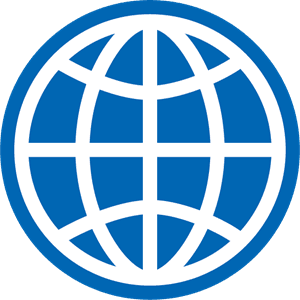
World Bank

David Malpass (President)
Summary
The World Bank is an important source of financial and technical support to developing countries around the world. They are not a bank in the ordinary sense but a novel partnership to reduce poverty and support development. The World Bank Group comprises five institutions managed by their member countries.
Established in 1944, the World Bank Group is headquartered in Washington, D.C. They have more than 10,000 employees in more than 120 offices worldwide.
History
As their website claims, it was founded in 1944, as the International Bank for Reconstruction and Development— then soon called the World Bank—has expanded to a closely associated group of five development institutions. Originally, its loans helped rebuild countries devastated by World War II.
In time, the focus shifted from reconstruction to development, with a heavy emphasis on infrastructure such as dams, electrical grids, irrigation systems, and roads. And the establishing of the International Development Association in 1960 put greater emphasis on the poorest countries, part of a steady shift toward the eradication of poverty becoming the Bank Group’s primary goal. The subsequent launch of the International Centre for Settlement of Investment Disputes and the Multilateral Investment Guarantee Agency further rounded out the Bank Group’s ability to connect global financial resources to the needs of developing countries.
“As demand for its services has increased over time, the Bank Group has risen to meet them. For perspective, the World Bank made four loans totalling $497 million in 1947, as compared to 302 commitments totalling $60 billion in 2015.”
Goals and Purpose
What do they provide? Low-interest loans, zero to low-interest credits, and grants to developing countries. These promote a broad array of investments in areas such as:
education, health, public administration, infrastructure, financial and private sector development, agriculture, and environmental and natural resource management.
They also work together with governments, other multilateral institutions, commercial banks, export credit agencies, and private sector investors.
Impact
Various developments had brought the Millennium Development Goals targets for 2015 within reach in some cases.
1. Eradicate Extreme Poverty and Hunger: From 1990 through 2004 the proportion of people living in extreme poverty fell from almost a third to less than a fifth.
2. Achieve Universal Primary Education: The percentage of children in school in developing countries increased from 80% in 1991 to 88% in 2005. Still, about 72 million children of primary school age, 57% of them girls, were not being educated as of 2005.
3. Promote Gender Equality: The tide is turning slowly for women in the labor market, yet far more women than men- worldwide more than 60%.
4. Reduce Child Mortality
5. Improve Maternal Health: Almost all of the half-million women who die during pregnancy or childbirth every year live in Sub-Saharan Africa and Asia.
6. Combat HIV/AIDS, Malaria, and Other Diseases: Annual numbers of new HIV infections and AIDS deaths have fallen, but the number of people living with HIV continues to grow.
7. Ensure Environmental Sustainability: Deforestation remains a critical problem, particularly in regions of biological diversity, which continues to decline. Greenhouse gas emissions are increasing faster than energy technology advancement.
8. Develop a Global Partnership for Development
An example of results
A five-day workshop on an island in the Maldives used soccer training, along with classes and discussions, to empower 21 young girls to challenge gender stereotypes and rethink their perceptions of their future. Led by trainers from the Maldivian women’s national soccer team, along with community facilitators, the workshop was a successful pilot program for what is envisioned as a long-term approach to changing the trajectory of women’s lives.
Girls who attended the workshop became less tolerant than before toward gender stereotypes. Their opinions changed about the suitability of girls undertaking jobs traditionally held by men. And they argued that women should work even if their husbands already earned enough to support them, and if they have children.
References
- https://www.crunchbase.com/organization/the-world-bank#section-overview
- https://www.worldbank.org/en/results
- https://www.worldbank.org/en/results/2019/09/11/maldives-introducing-girls-to-soccer-helps-instill-self-confidence-conquer-gender-stereotypes
- https://en.wikipedia.org/wiki/World_Bank
- https://www.brettonwoodsproject.org/2019/06/what-are-the-main-criticisms-of-the-world-bank-and-the-imf/
- http://www.globalization101.org/why-is-the-world-bank-controversial/
Dive deeper into fresh insights across Business, Industry Leaders and Influencers, Organizations, Education, and Investors for a comprehensive view.

David Malpass (President)
